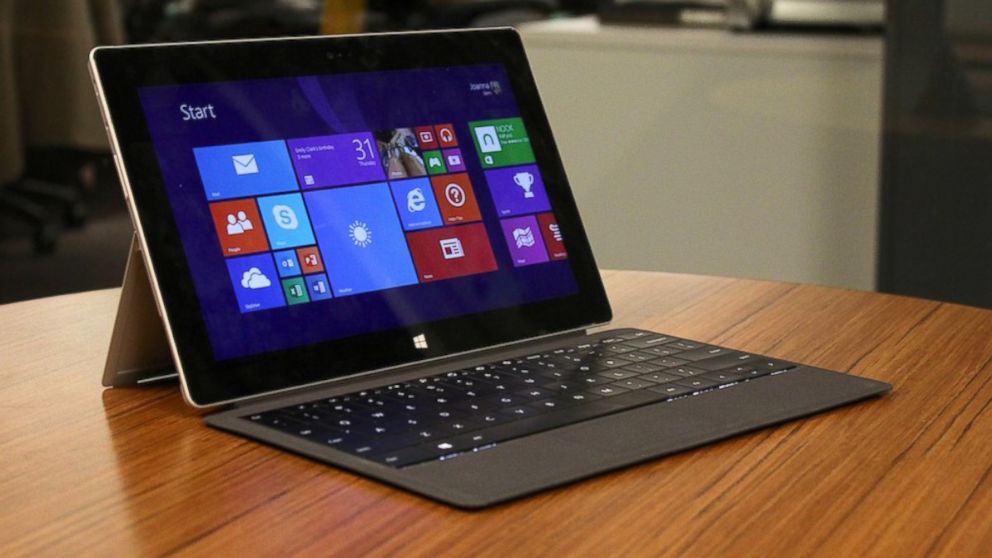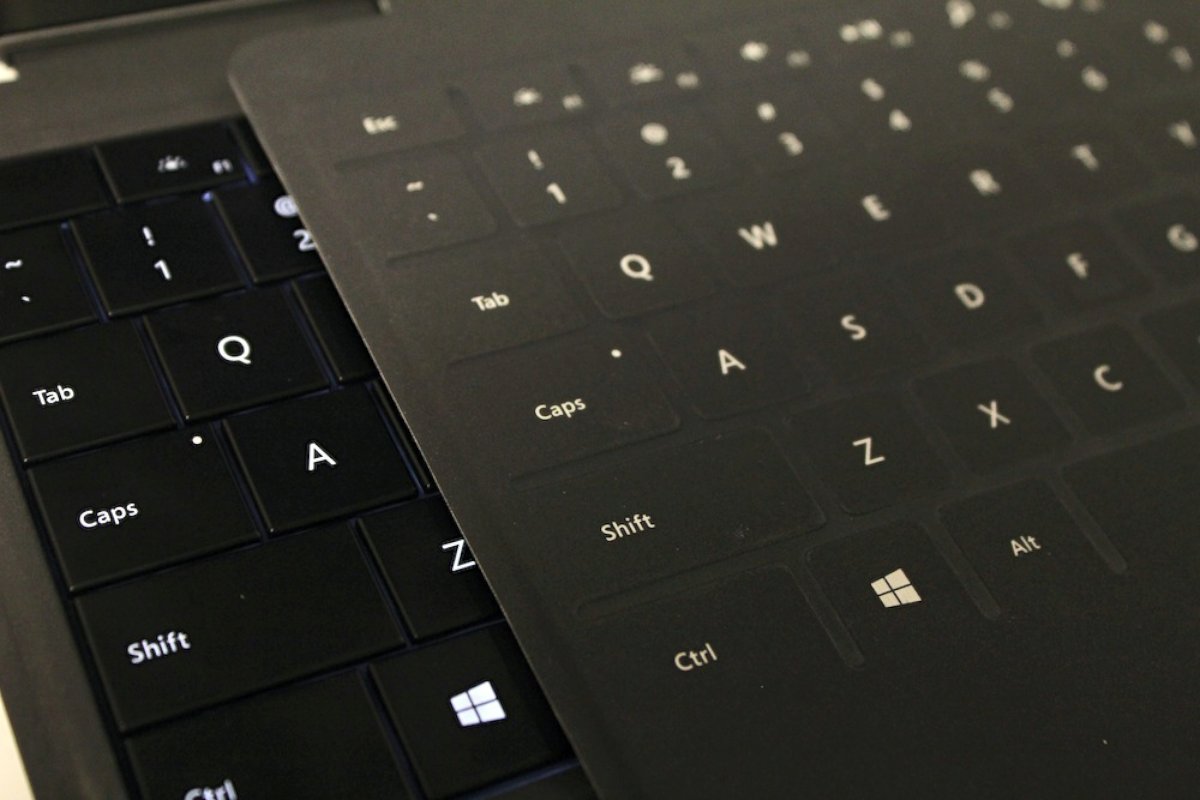Microsoft Surface 2 Review: A Tablet / Keyboard Duo Worthy of a Second Chance
After some big improvements, does Microsoft’s Surface finally rival the iPad?

Nov. 1, 2013 — -- You can say Microsoft’s original Surface tablet was a bit of a box office flop. The company’s first tablet aimed to offer a list of things the iPad didn’t – Microsoft Office, a nice keyboard companion and some interesting multitasking features -- but most people didn’t quite see it that way. Microsoft ultimately dropped the price on the tablet to move stock and took a $900 million write-down on unsold inventory.
With the sequel – the Surface 2 – Microsoft is asking for a second chance. For $449, Microsoft has slimmed down the tablet, improved the screen, doubled the battery life and made a host of tweaks to Windows to address the initial frustrations. It has also improved the companion $100 Touch Cover and the $150 Type Cover keyboards.
This time around, Microsoft is promising the most productive tablet and the only device you need in your bag. But is it? Do those fixes put the Surface on better footing in the crowded tablet market, or is Microsoft looking at another failed attempt to thwart the competition?
A New Color and Screen
Despite some cosmetic changes, the Surface still looks like a Surface. And thanks to the new Surface logo on the back of the kickstand everyone can tell that’s exactly what it is. But that’s not necessarily a bad thing.
Like the original, the magnesium or VaporMg structure and the Gorilla Glass screen give it an extremely solid build, which, as I tested last year, allows the tablet to survive all sorts of bumps and drops. Microsoft has actually brought out the color of the metal on the new Surface 2, which is now available in only a silver shade. The $899 Surface Pro 2 is only available in black.
The tablet still has its signature built-in kickstand, though Microsoft has added another latch to allow it to sit back a bit further. It might seem like a small thing, but it allowed me to write the brunt of this review in an airplane seat with the tablet comfortably propped up on my lap. However, the biggest aesthetic difference you’ll only notice when you lift up the tablet and see that is now .35 inches thick and 1.49 pounds. No, that’s nowhere as near as thin or light as Apple’s 1-pound iPad Air and still doesn’t allow for one-handed use, but it’s a substantial improvement over the last generation.
O.K., so maybe onlookers might not notice the difference between the new Surface and the old, but they will be able to tell the difference if they look at the screen. Microsoft has upgraded the 10.6-inch display’s resolution to 1920 x 1080, making everything crisper and clearer. The anti-glare coating has also been improved and does help cut down on reflection from the sun or overhead light.
Touch and Type Covers

“This is not just a tablet,” or it’s “the one device for everything in your life.” Every ad for the Surface features the Touch or Type keyboard covers with just such a tagline. However, what Microsoft doesn’t say in those advertisements is that the keyboard cover isn’t included and it costs at least an extra $100 to turn the tablet into a laptop.
And if there is a reason to get the Surface, it is for the keyboard options. Typing on the flat surface of the Touch Cover still takes some getting used to, but the sensitivity has been improved with this version. The Type Cover, in comparison, has real keys and is really akin to typing on a laptop. Both keyboards are now backlit and automatically illuminate when it is dim or dark, which came in very handy in my dark coach airplane seat.
For the brunt of my testing, I have used one of the two covers. They do enhance the tablet experience, just as Microsoft says on its billboards, which is why I wish one of them was included with the tablet for the starting price.
If there is a reason to get the Surface, it is for the keyboards
On the Inside
The most significant changes really do happen inside the tablet, where Microsoft has crammed more processing and battery power. Now powered by a quad-core NVIDIA Tegra 4 processor, the tablet ran much more swiftly than the previous version, launching apps quickly and smoothly scrolling down long webpages.
But the most improved award goes to the battery life. Unlike the previous version, which lasted just eight hours on a charge, the Surface 2 looped a video for 13 hours. I also had more than 50 percent remaining after a flight from NYC to San Francisco.But all of that hardware advancement would be for nothing without some software improvements. Windows 8.1, Microsoft’s latest update to Windows 8, includes some much-needed usability improvements and finally includes some easy on-screen instructions for guiding new users through features, including placing two apps side by side.
What the first Surface should have been
Windows 8 feels like a much stronger operating system than a year ago, though one still confused about its identity. Am I a laptop? Am I a tablet? Jumping between the traditional desktop and the touch-friendly homescreen of live tiles is jarring and confusing. Still, Microsoft has polished up some features, including the search function, which now searches Bing and the computer. It has also added new apps like the Reading List, which makes it really easy to save an article and read it in an RSS App, and it has improved core apps like Internet Explorer and Mail. This version also includes a full version of Office.
However, while the Windows Store is stocked with more apps than a year ago, it is still missing some of my go-to tablet applications, making it hard for me to feel fully at home on the Surface. While the new Facebook and Twitter apps are nicely designed, the store still lacks apps I use on a daily basis, including Flipboard (though it should arrive soon), Feedly and Rdio.
And because this is running the RT version of Windows 8.1, you cannot simply download apps through the browser. The $899 Surface Pro comes with the full version of Windows 8.1 capable of running all types of Windows applications. We’ll forgive you for being confused.
Bottom Line
The Surface 2 is a vastly improved tablet. It’s what the first Surface should have been — a thin, light, long-lasting machine with a nice screen. But while Microsoft has been busy catching up, the competition has been staying a step ahead. Apple’s iPad Air hits shelves today and the tablet is nearly half the weight and thickness of the Surface. It also has a bigger breadth of apps and now has a free version of iWork, Apple’s Office alternative.
The Surface’s keyboards continue to set it apart, but with that added on you’re looking at a $550 package. Still, the Surface 2 is a compelling option for those who are invested in the Microsoft ecosystem, enjoy some of Windows 8.1’s features, and want a tablet that works seamlessly with a keyboard. The Surface won’t be a box office flop again, but it’s still not the hit sequel the company was hoping for.



